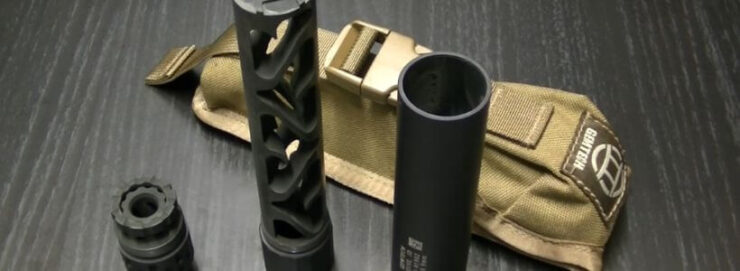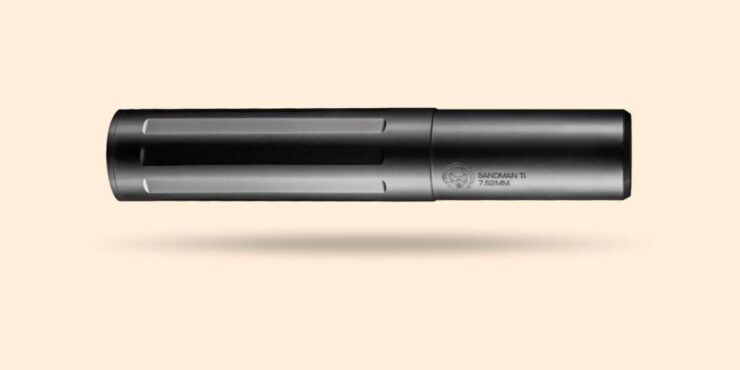If you own a silencer, then you would know that it has to be cleaned very often to keep up the good performance. The cleaning aluminum suppressor baffles method usually depends on the type of silencer and caliber you use.
And if you have an aluminum suppressor baffle, then you are in luck. This article is going to tell you everything about cleaning aluminum suppressor baffles.
Let’s get started!
What Is a Suppressor?
The suppressor is another name for the silencer. A silencer is a gun that minimizes the sound of the gunshot and the flash of the gunshot by changing the speed and pressure of the gas ejected. In other words, the silencer suppresses the gunshot.
It can be also be used as a detachable accessory used on different barrels to reduce the after-effects of the gunshots. This was first invented and sold in 1902 by an American inventor Hiram Percy Maxim, and later it received a patent in 1909.
Hiram Percy Maxim was the son of the gun inventor Hiram Stevens Maxim and the co-founder of the American Radio Relay League. It was called the Maxim Silencers then, and one of the first customers of the Maxim silencer was the former president of the United States Theodore Roosevelt.
Related Guide: 45 Suppressor Guide
What Is a Baffle?

The baffle is one of the most essential parts of the silencer as it enhances the silencer’s durability and performance. They are circular dividers, and their job is to separate the expansion chambers.
And they usually have a hole at the center so that the bullet could pass through the barrel and at the direction of the target.
Moreover, the hole is usually 1mm larger than the bullet size so that we can avoid baffle strike, which happens when the bullet accidentally hits the baffle while passing through it, and this can only happen if the hole is too small.
There are different types of baffles out in the market, and each is made up of different materials. Each of the materials has its advantages and disadvantages, and the selection of the material is crucial to the purpose the gunman uses the silencer for. There are stainless steel, aluminum, titanium, and different alloys such as Inconel.
Aluminum baffles are usually used in rimfire suppressors as they are lightweight. All the high performing and the lightest weighted suppressors have the aluminum baffles in them.
However, aluminum baffles are not strong enough to work in high-pressure calibers like 0.22 mag or 0.17 HMR. They are also quite cheap and very easy to use.
Related Review: Suppressor Hand guard.
Why Do We Need to Clean?
As we use the silencers and the firearms, carbon and lead keep building up in the barrel. As it builds up, there are lesser rooms for the gases to escape to, and you hear your silencer making noise. That just defeats the entire purpose of having a silencer in the first place.
If the carbon and the lead accumulate and get harder, then it would be very difficult to clean and could eventually lead to permanent damage to the baffle.
Carbon and lead could also get accumulated around the hole in the baffle where the bullet is supposed to pass through and cause baffle strikes. But if spoken in generalized view, suppressors work better when they are cleaned, so you must keep it clean.
Things You Need to Know about Suppressor Cleaning
Here are some things you need to know about before getting started;
Dress Up Properly
The first thing to remember when you are cleaning a suppressor is that the carbon and lead accumulate in the baffle, and the solvents you might be using to clean up the suppressor can in no way be good for your health.
So make sure that you are dressed properly; that is, you have your goggles and gloves on and that you are in a well-ventilated area.
Pick Solvent Carefully
The rule of thumb is that no matter what the material of your baffles is, some solvents like acetone, paint thinner and soapy water will remove the carbon and the lead that has gathered in the baffle.
Moreover, the materials used to make suppressors are very similar to the ones that are used to make firearms. So if you want, you can use the solvents you use to clean your firearms as well. Sometimes the suppressors are coated with Cerakote, so not all solvents are used on Cerakote.
You have to handpick your solvent carefully. The solvent CLP is the best choice when it comes to cleaning. You also need a nylon brush to brush the carbon and lead crumbs off.
Use Stuffed Plastic
If there is a stubborn buildup of carbon and lead, then you would also need a small piece of wood or a stuffed plastic piece so that you can scrape it off the baffle slowly without damaging the baffle.
However, if not spoken in a generalized way, there are different methods and dos and don’ts when it comes to the material of the suppressors. Like when it comes to aluminum suppressor baffle, there is a specific way to clean it, and it is described below.
Tips Regarding Aluminum Suppressor Baffle
You can adopt many ways when you are about to clean aluminum suppressor baffle. Here are some tips for you, and if you follow these instructions, you would be good to go.
Conclusion
There you go! That is everything that you could want to know about cleaning aluminum suppressor baffles. A word of advice would be to be cautious because even if we are just cleaning it, guns are dangerous objects. And the solvents used in the process are not good for you. So take the necessary precautions and stay safe.

